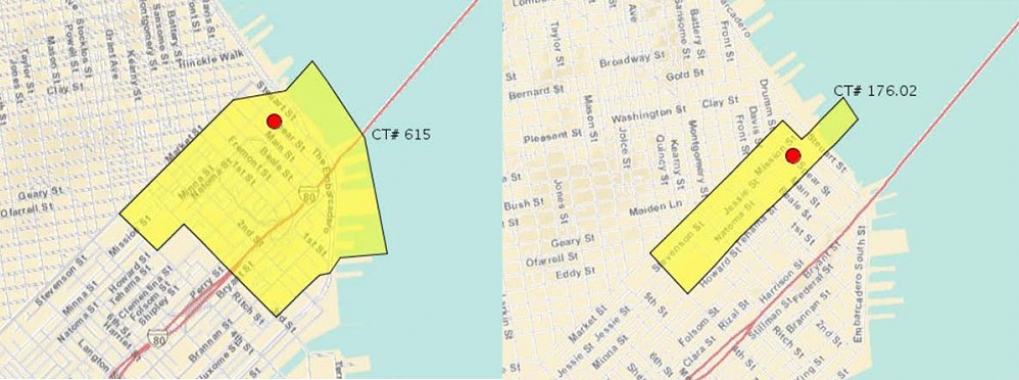Latest EB-5 News

TEA Changes
As I have previously reported, some states, including California, are now switching from using 2000 census tract boundaries to 2010 census tract boundaries for determining targeted employment area (TEA) qualification.
In some cases this switch may affect TEA designation. Here is an example of the difference that may arise:
Consider a particular address south of Market Street in San Francisco (indicated by the red dot on the map below). Using the 2000 census tract (CT) boundaries, the address is located in CT# 176.02, which looks like this:
CT 17602
CT# 176.02 has an unemployment rate of 11.6%, which is above 150% of the national unemployment rate needed to qualify as a TEA (currently must be 11.1% or higher).
Beginning May 1, 2014, California will use the new 2010 CT boundaries. The south of Market Street address now lies in CT# 615, which looks like this:
CT 615
CT# 615 has an unemployment rate of 5.1%, well below the unemployment rate of 11.1% needed to qualify as a TEA.
In this example, the next question is whether averaging the rates of a group of CTs contiguous with CT# 615 will result in a TEA. In California, 12 CTs is the maximum number that may be averaged.
Another TEA issue which I hope will be successfully resolved
The USCIS has issued an RFE which raises a very disturbing issue that could jeopardize most high unemployment TEAs based on census tracts. The RFE contains the following language:
Please note that the unavailability of census tract level employment statistics for the year 2012 does not mean that it is appropriate for the petitioner to substitute 5-year employment statistics from the American Community Survey. Evidence such as 5-year old employment statistics is not sufficient evidence that the project’s area was located in a TEA at the time the Form I-526 was filed because such employment statistics are not the most recent publicly available employment statistics.
In this case, the EB-5 petitioner’s TEA is a legislative district consisting of a small municipality and a large municipality in the Midwest. At the time of the petitioner’s investment in February 2013 and her I-526 filing date in June 2013, the most recent data for the small municipality was ACS data covering 2009-2011 and 2007-2011. ACS data covering 2012 was not available because it was not released until the end of 2013. There is no other data that covers small municipalities (or census tracts).
If the investor here, who contributed capital in February 2013, could not rely on ACS data preceding 2012, she could not know whether she contributed enough capital until the end of 2013. Even then, the language of this RFE does not clarify whether 2010-2012 or 2008-2012 would suffice given that this data covers periods including years preceding 2012.
The quoted language above, is contrary to the USCIS May 30, 2013 EB-5 memo. It basically would prohibit investors from relying on ACS data at the time of investment and at the time the I-526 petition is filed. It would thus eliminate TEAs based on small municipalities or census tracts.
I have brought this to the attention of the USCIS Headquarters. It is unclear if this is an aberration, but it appears that a similar RFE was issued in a case from Hawaii, which was inadvertently referenced in the RFE, and, therefore, this does not appear to an isolated case.
I hope USCIS Headquarters will resolve this matter favorably by withdrawing the RFE and instructing adjudicators how TEAs should be determined.
WEB
